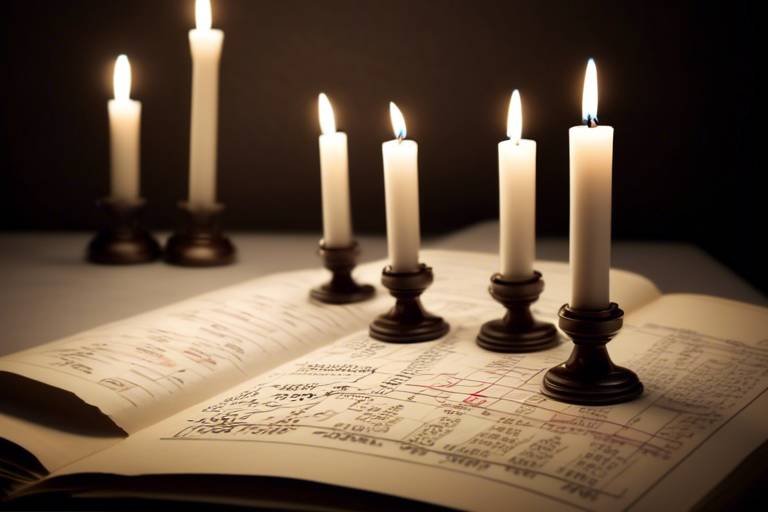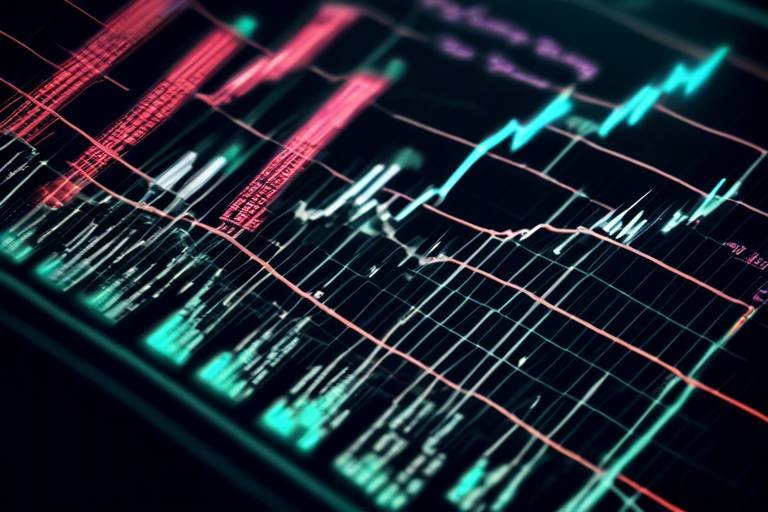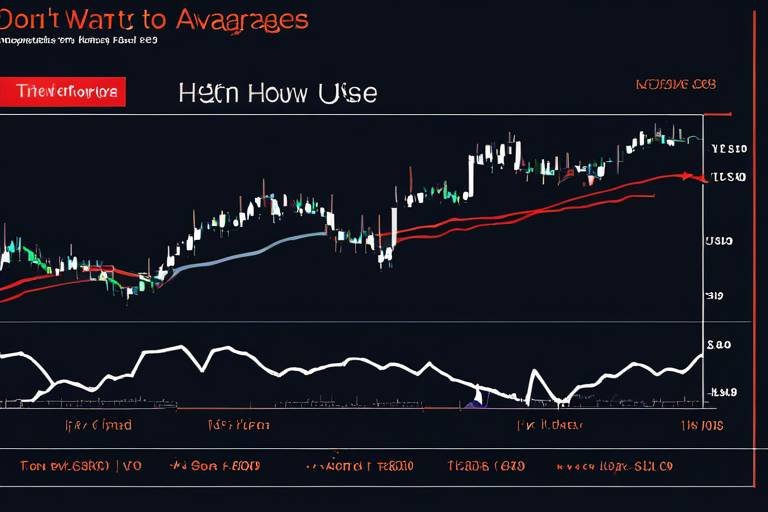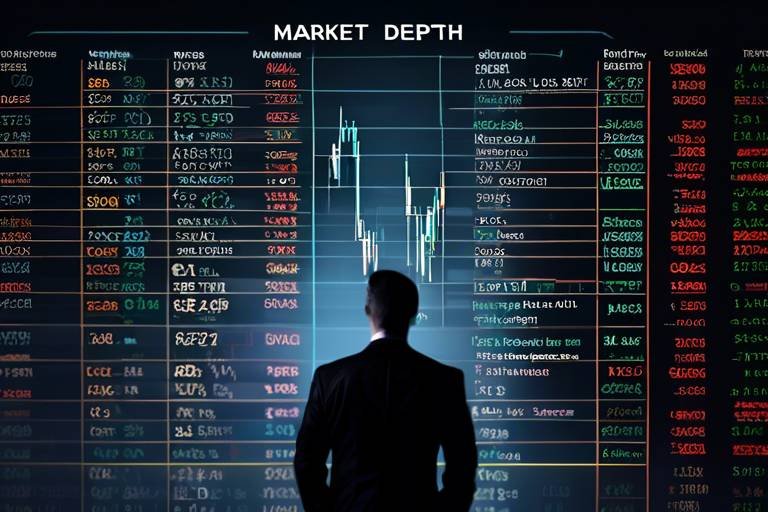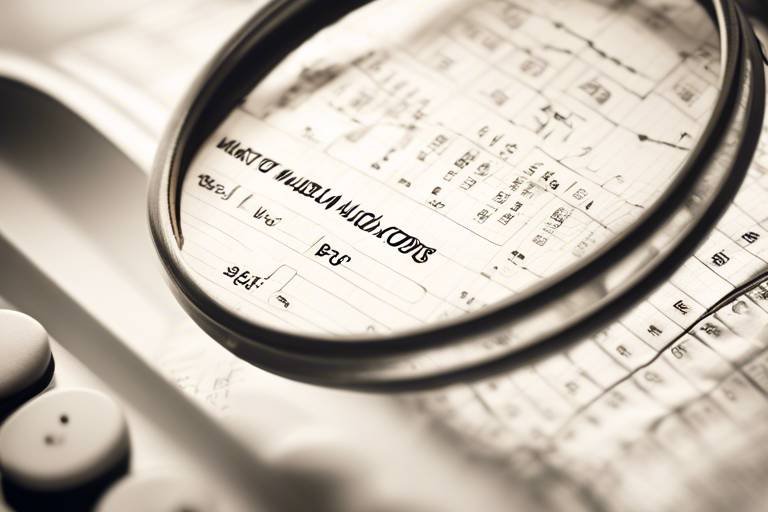Understanding the Role of Candlestick Patterns in Market Sentiment
In the world of trading, where decisions are often made in the blink of an eye, candlestick patterns serve as a beacon of insight into market sentiment. Imagine standing on the edge of a cliff, peering into the vast ocean of price movements; candlestick patterns are like lighthouses guiding you through the fog. They provide traders with visual indicators that reflect the psychology of the market, allowing for informed decision-making. By analyzing these patterns, traders can gain a deeper understanding of whether the market is leaning towards bullish optimism or bearish pessimism.
At their core, candlestick patterns encapsulate four vital pieces of information: the open, close, high, and low prices within a specific timeframe. Each candlestick tells a story of price action, revealing the struggle between buyers and sellers. A single candlestick can represent a multitude of emotions, from fear and greed to indecision. Understanding these emotional undercurrents is crucial for traders who want to navigate the often turbulent waters of the financial markets.
Picture this: a trader looks at a chart filled with candlesticks, each one a snapshot of a moment in time. Some candlesticks stand tall, suggesting a strong buying interest, while others are short and squat, hinting at a lack of conviction. By interpreting these shapes and colors, traders can gauge whether the market is gearing up for a rally or bracing for a downturn. This ability to read market sentiment is what separates successful traders from those who merely guess.
Furthermore, candlestick patterns are not just isolated events; they often form complex patterns that can reveal even more about market sentiment. For example, a series of bullish candlesticks followed by a doji might indicate that buyers are losing momentum, signaling a potential reversal. This interplay of patterns creates a dynamic narrative that traders can leverage to refine their strategies.
In summary, understanding candlestick patterns is akin to learning a new language—one that speaks directly to the heart of market sentiment. By mastering this language, traders can unlock the secrets of price movements and make decisions that are not only informed but also strategically sound. So, whether you're a seasoned trader or just starting, embracing the art of candlestick analysis could be your ticket to navigating the complexities of the market with confidence.
| Candlestick Components | Description |
|---|---|
| Open | The price at which a security opens for trading during a given time period. |
| Close | The price at which a security closes at the end of the trading period. |
| High | The highest price reached during the trading period. |
| Low | The lowest price reached during the trading period. |
As we delve deeper into the world of candlestick patterns, we will uncover the various types that exist and how they can be utilized to interpret market sentiment effectively. Stay tuned as we explore the nuances of these patterns and how they can elevate your trading game!
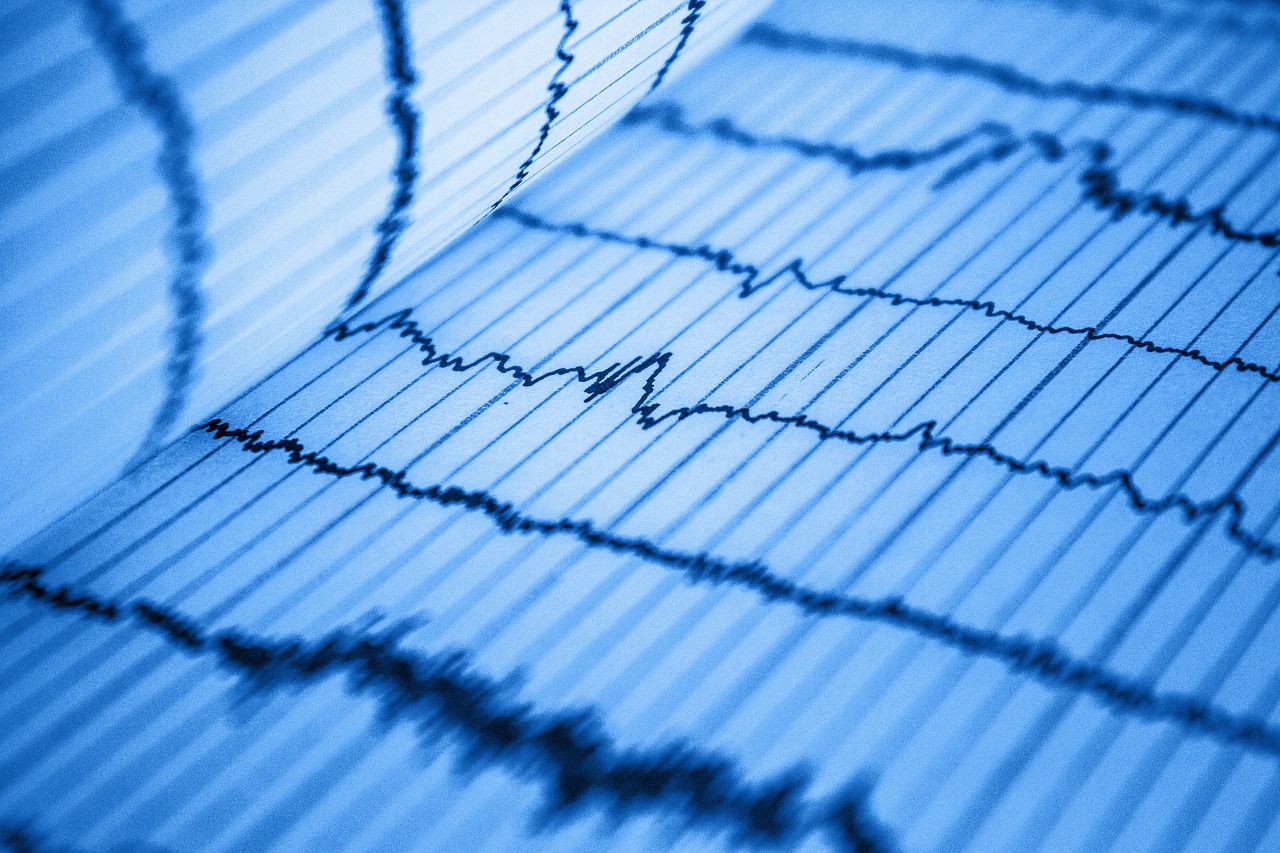
The Basics of Candlestick Patterns
Candlestick patterns are essential tools in technical analysis, serving as a visual representation of price movements over a specific period. Imagine a candlestick as a tiny storybook of market action, where each candle tells you about the opening, closing, high, and low prices within a given timeframe. These four components are crucial for understanding the market's sentiment and potential future movements. The open price is where the market starts at the beginning of the period, while the close price indicates where it ends. The high and low prices reveal the extremes reached during that period, providing a complete picture of market activity.
To better understand this concept, let's break down a typical candlestick. A candlestick consists of a body and shadows (or wicks). The body represents the range between the open and close prices, while the shadows depict the high and low prices. If the close price is higher than the open price, the body is usually filled with a lighter color (often green or white), indicating bullish sentiment. Conversely, if the close price is lower than the open price, the body is typically darker (often red or black), signaling bearish sentiment. This visual cue helps traders quickly assess market conditions at a glance.
Moreover, candlestick patterns can be categorized based on their shapes and formations, which can indicate different market sentiments. For instance, patterns like dojis and hammers are single candlestick patterns that convey unique messages about market indecision and potential reversals. Understanding these patterns is vital for traders who want to interpret market psychology effectively. In the world of trading, recognizing these signals can mean the difference between a profitable trade and a costly mistake.
To illustrate the significance of candlestick patterns, consider the following table that summarizes the key components:
| Component | Description |
|---|---|
| Open | The price at which a security starts trading during a specific period. |
| Close | The price at which a security ends trading during that period. |
| High | The highest price reached during the trading period. |
| Low | The lowest price reached during the trading period. |
Understanding these basics is just the beginning. As you delve deeper into candlestick patterns, you'll discover how they can reveal the underlying emotions driving the market. So, are you ready to explore the various types of candlestick patterns and what they mean for your trading strategy?

Types of Candlestick Patterns
Candlestick patterns are like the emotional heartbeat of the market, each one telling a story about what traders are feeling. Understanding these patterns is crucial for anyone looking to navigate the often tumultuous waters of trading. There are primarily three categories of candlestick patterns: bullish, bearish, and neutral. Each type conveys different market sentiments and can significantly influence trading strategies.
Bullish patterns are signals that suggest a potential price increase. These patterns typically emerge after a downtrend, indicating that buyers are gaining strength. For example, the bullish engulfing pattern occurs when a small bearish candle is followed by a larger bullish candle that completely engulfs it. This suggests a shift in momentum, as buyers start to take control.
On the other hand, bearish patterns indicate a potential price decrease. These patterns often appear after an uptrend, signaling that sellers are starting to dominate the market. A classic example is the bearish engulfing pattern, where a larger bearish candle engulfs a smaller bullish candle, hinting at a reversal in sentiment.
Then, we have neutral patterns, which indicate indecision in the market. These patterns suggest that neither buyers nor sellers have the upper hand, leading to potential price consolidation. The doji is a well-known neutral pattern, characterized by its small body and long wicks, reflecting a tug-of-war between buyers and sellers.
To help you visualize these patterns, here’s a simple table summarizing the three types:
| Type | Pattern | Market Sentiment |
|---|---|---|
| Bullish | Bullish Engulfing | Buyers gaining strength |
| Bearish | Bearish Engulfing | Sellers gaining strength |
| Neutral | Doji | Indecision in the market |
Understanding these types of patterns is just the beginning. Each pattern has its nuances and can be influenced by various factors such as market news, economic indicators, and overall market conditions. Therefore, it’s essential for traders to not only recognize these patterns but also to consider the broader context in which they appear.
In summary, whether you’re a seasoned trader or just starting out, familiarizing yourself with these candlestick patterns can enhance your trading strategy. Remember, the market is like a living organism, constantly changing and evolving. By interpreting these patterns, you can gain valuable insights into market sentiment and make more informed trading decisions.
1. What are candlestick patterns?
Candlestick patterns are visual representations of price movements in a specific time frame, providing insights into market sentiment and potential future price movements.
2. How can I identify bullish and bearish patterns?
Bullish patterns often appear after a downtrend and indicate potential price increases, while bearish patterns appear after an uptrend and suggest potential price decreases. Recognizing the size and position of the candles is key.
3. Are candlestick patterns reliable?
While candlestick patterns can provide valuable insights, they should not be used in isolation. It's best to combine them with other indicators for a more comprehensive analysis.

Single Candlestick Patterns
When it comes to understanding market sentiment, serve as quick and effective indicators. These patterns, formed by just one candlestick, can reveal a lot about the emotions and intentions of traders in the market. Think of them as snapshots that capture the mood of the market at a specific moment in time. They are like the single frame of a movie that can tell you whether the story is about to take a turn for the better or worse.
Among the most notable single candlestick patterns are the Doji and the Hammer. Each of these patterns has its own unique characteristics and implications for traders. Understanding these patterns can give you an edge, helping you to make informed decisions based on the psychology of the market.
The Doji pattern is particularly fascinating. It forms when the opening and closing prices of a candlestick are virtually the same, creating a cross-like appearance. This pattern signifies indecision in the market. When you see a Doji, it’s like the market is holding its breath, unsure of which direction to take. This uncertainty can often precede a significant price movement. Traders often look for Doji formations at the end of a trend, as they can indicate that a reversal might be on the horizon. Here’s a quick overview of the Doji's implications:
| Doji Type | Market Sentiment |
|---|---|
| Standard Doji | Indecision |
| Gravestone Doji | Bearish Reversal |
| Dragonfly Doji | Bullish Reversal |
On the other hand, the Hammer pattern is a bullish reversal signal that forms after a downtrend. It looks like a hammer, with a small body at the top and a long lower shadow. This pattern indicates that despite selling pressure, buyers stepped in and pushed the price back up before the close. It’s a clear indication that the bulls are starting to take control, and traders often see it as a signal to enter the market. Recognizing a Hammer pattern can be crucial, especially when it's confirmed by subsequent price action.
In summary, single candlestick patterns like the Doji and Hammer are essential tools for traders. They offer quick insights into market psychology and can help identify potential shifts in market direction. By paying close attention to these patterns, you can enhance your trading strategy and increase your chances of success in the ever-changing world of financial markets.
- What is the significance of a Doji pattern? A Doji pattern signifies market indecision, often indicating a potential reversal in price trends.
- How can I identify a Hammer pattern? A Hammer pattern is identified by a small body at the top of the candlestick with a long lower shadow, suggesting a potential bullish reversal.
- Can single candlestick patterns be used alone for trading decisions? While they provide valuable insights, it's advisable to combine them with other indicators for more reliable trading decisions.

Doji Patterns
Doji patterns are fascinating formations that signal a moment of indecision in the market. Picture this: after a strong price movement, the market pauses, and neither buyers nor sellers can assert dominance. This scenario creates a doji, characterized by a small body with long wicks on either side, representing the open and close prices being very close to each other. The presence of a doji can be a crucial indicator, suggesting that a potential reversal or continuation of the trend might be on the horizon.
When traders spot a doji, it’s essential to consider the context in which it appears. For instance, if a doji forms after a prolonged uptrend, it might hint at a weakening bullish sentiment, signaling that sellers could be preparing to take control. Conversely, if it appears following a downtrend, it could indicate that buyers are starting to step in, potentially leading to a reversal. The key takeaway here is that doji patterns are not standalone signals; they must be interpreted within the broader market context.
There are several types of doji patterns, including:
- Standard Doji: This classic formation has equal-length upper and lower shadows, indicating market indecision.
- Gravestone Doji: This occurs when the open and close prices are at the low of the session, suggesting potential bearish reversals.
- Dragonfly Doji: Here, the open and close are at the high of the session, hinting at potential bullish reversals.
To effectively use doji patterns in trading, it's advisable to combine them with other technical indicators and market context. For example, if a doji appears near a significant support or resistance level, it could strengthen the case for a potential reversal. Additionally, observing the trading volume during the formation of a doji can provide further insights; a doji with high volume may carry more weight than one with low volume.
In summary, doji patterns are powerful tools in a trader's arsenal. They encapsulate the struggle between buyers and sellers, offering a glimpse into market sentiment. By understanding how to interpret these patterns, traders can make more informed decisions and potentially capitalize on upcoming market movements.
What does a doji pattern indicate?
A doji pattern indicates indecision in the market, suggesting that neither buyers nor sellers are in control, which could lead to a potential reversal or continuation of the trend.
How can I trade using doji patterns?
To trade using doji patterns, look for them at key support or resistance levels, and confirm the signal with other indicators such as volume or trend analysis.
Are all doji patterns the same?
No, there are different types of doji patterns, such as the standard doji, gravestone doji, and dragonfly doji, each with unique implications for market sentiment.

Hammer Patterns
Hammer patterns are fascinating formations that can signal a potential reversal in a downtrend. Picture this: after a series of declining prices, a hammer appears on the chart, resembling a hammer ready to strike. This pattern typically consists of a small body located at the upper end of the trading range, with a long lower shadow that extends downward. The long lower shadow indicates that sellers pushed the price down significantly during the trading session, but buyers stepped in and pushed the price back up, closing near the opening price. This battle between buyers and sellers is crucial for traders to understand, as it reflects a shift in market sentiment.
To recognize a hammer pattern, traders should look for the following characteristics:
- Body Size: The body should be small, indicating a narrow range between the opening and closing prices.
- Lower Shadow: The lower shadow must be at least twice the length of the body, showcasing the significant downward movement before buyers regained control.
- Upper Shadow: Ideally, there should be little to no upper shadow, reinforcing that the price closed near the opening level.
The implications of a hammer pattern are profound. It suggests that despite the prevailing downtrend, there is a glimmer of hope as buyers begin to dominate. Traders often interpret this as a bullish signal, indicating that a reversal might be on the horizon. However, it's essential to confirm this pattern with additional indicators or price action to avoid false signals. A hammer pattern followed by a bullish confirmation, such as a strong upward movement in the next trading session, can be a powerful signal for traders looking to enter long positions.
In summary, hammer patterns serve as visual representations of market sentiment, highlighting the struggle between buyers and sellers. By recognizing and interpreting these patterns effectively, traders can position themselves advantageously in the market, potentially turning the tide in their favor. So, the next time you spot a hammer on your charts, remember that it might just be the signal you've been waiting for!

Multiple Candlestick Patterns
When it comes to understanding market sentiment, are like a treasure map, guiding traders through the often turbulent seas of price action. These patterns, formed by two or more candlesticks, offer a more nuanced view of market dynamics compared to single candlestick formations. They can signal significant shifts in market sentiment, making them essential tools for traders looking to navigate the complexities of financial markets.
One of the most recognized multiple candlestick patterns is the engulfing pattern. This pattern occurs when a smaller candlestick is followed by a larger candlestick that completely engulfs the previous one. An engulfing pattern can be bullish or bearish, depending on the direction of the engulfing candle. A bullish engulfing pattern appears after a downtrend and indicates a potential reversal to the upside, while a bearish engulfing pattern occurs after an uptrend, signaling a possible downturn. The psychology behind these patterns is fascinating; they represent a shift in control from sellers to buyers or vice versa, showcasing the ever-changing landscape of investor sentiment.
Another significant pattern is the evening star, which is a three-candle formation that typically indicates a reversal in an uptrend. The first candle is a large bullish candle, followed by a smaller-bodied candle that gaps higher, and finally, a large bearish candle that closes below the midpoint of the first bullish candle. This pattern suggests that buyers are losing momentum and that sellers are starting to take control. Traders often look for confirmation through volume, as increased selling activity can reinforce the validity of this pattern.
The morning star is the opposite of the evening star and signals a potential reversal after a downtrend. It consists of three candles: a large bearish candle, followed by a small-bodied candle that gaps down, and then a large bullish candle that closes above the midpoint of the first bearish candle. This pattern indicates that the market sentiment is shifting from bearish to bullish, and traders often see this as a signal to enter long positions.
Understanding these multiple candlestick patterns can significantly enhance a trader's ability to make informed decisions. However, it's crucial to remember that no pattern is foolproof. Traders should always consider other factors, such as market conditions, volume, and additional technical indicators, to confirm their analysis. The interplay between these elements can provide a clearer picture of market sentiment, allowing traders to navigate their strategies with greater confidence.
- What is the significance of multiple candlestick patterns? Multiple candlestick patterns provide deeper insights into market sentiment and potential reversals, helping traders make better-informed decisions.
- How can I identify an engulfing pattern? An engulfing pattern is identified when a larger candlestick completely engulfs the previous smaller candlestick, indicating a possible shift in market control.
- What should I combine with candlestick patterns for better analysis? Combining candlestick patterns with other indicators such as volume, moving averages, or RSI can enhance your trading strategy and confirm signals.

Interpreting Market Sentiment Using Candlestick Patterns
Understanding market sentiment through candlestick patterns is crucial for traders seeking to make informed decisions. These patterns act as visual indicators that reflect the emotions and psychology of market participants. When you look at a candlestick chart, you're not just seeing a series of price movements; you're witnessing the collective sentiment of buyers and sellers at a glance. But how do you interpret these patterns effectively?
To begin with, it's essential to analyze the context in which these patterns appear. A single candlestick may tell you something, but when placed within the broader market context, its significance can change dramatically. For instance, a doji pattern might indicate indecision when it appears after a strong uptrend, suggesting that buyers are losing momentum. Conversely, if it appears after a downtrend, it might signal a potential reversal. This is why context is key!
Moreover, combining candlestick patterns with other technical indicators can enhance your understanding of market sentiment. For instance, when a bullish engulfing pattern forms alongside increasing volume, it strengthens the case for a potential upward trend. Similarly, if a bearish pattern appears and is confirmed by a drop in volume, this could indicate a weakening trend. Here’s a quick look at how you can combine candlestick patterns with other indicators:
| Candlestick Pattern | Confirmation Indicator | Interpretation |
|---|---|---|
| Bullish Engulfing | Increased Volume | Strong potential for upward movement |
| Bearish Engulfing | Decreased Volume | Potential trend weakness |
| Doji | RSI Divergence | Possible reversal point |
In addition to volume and other indicators, traders should also consider market news and events that can affect sentiment. For example, an earnings report that exceeds expectations might coincide with a bullish candlestick pattern, reinforcing the idea that the market sentiment is shifting positively. On the other hand, negative news can lead to bearish patterns, even if the technical indicators suggest otherwise.
Ultimately, interpreting market sentiment using candlestick patterns is like piecing together a puzzle. Each pattern, each indicator, and each piece of news contributes to the bigger picture. By honing your skills in recognizing these patterns and understanding their implications, you can significantly enhance your trading strategy and make better-informed decisions. Remember, trading is not just about numbers and charts; it's about understanding the emotions and psychology that drive market movements.
- What are candlestick patterns?
Candlestick patterns are formations created by the open, high, low, and close prices of an asset over a specific time period. They help traders understand market sentiment and potential price movements.
- How do I interpret a doji pattern?
A doji pattern signifies indecision in the market. It indicates that buyers and sellers are in equilibrium, and it could suggest a potential reversal depending on the preceding trend.
- Can candlestick patterns be used alone for trading?
While candlestick patterns provide valuable insights, they are most effective when combined with other technical indicators and market analysis for a more comprehensive view.

Combining Candlestick Patterns with Other Indicators
When it comes to trading, relying solely on candlestick patterns can sometimes feel like trying to navigate a maze without a map. While these patterns provide valuable insights into market sentiment, integrating them with other technical indicators can significantly enhance your trading strategy. Imagine you’re a chef mixing flavors; each ingredient adds depth to the dish, just like combining candlestick patterns with indicators enriches your analysis.
One of the most effective ways to combine candlestick patterns with other indicators is through the use of moving averages. Moving averages smooth out price data, allowing traders to identify trends more clearly. For instance, when a candlestick pattern forms above a moving average, it can signal a strong bullish trend, whereas a pattern below might indicate bearish sentiment. This synergy between moving averages and candlestick patterns can help confirm potential entry and exit points.
Another powerful indicator to consider is the Relative Strength Index (RSI). The RSI measures the speed and change of price movements, helping traders identify overbought or oversold conditions. When you spot a bullish candlestick pattern, like a hammer, coinciding with an RSI reading below 30, it could suggest a strong reversal opportunity. On the flip side, if a bearish pattern appears when the RSI is above 70, it may indicate an impending price drop. This combination provides a more robust framework for decision-making.
The Moving Average Convergence Divergence (MACD) is yet another valuable tool. This indicator helps traders identify changes in momentum by comparing two moving averages. When a bullish candlestick pattern aligns with a MACD crossover, it can serve as a strong buy signal. Conversely, if a bearish pattern coincides with a MACD crossover to the downside, it may indicate a sell opportunity. By layering these indicators, you can create a more comprehensive view of market dynamics.
To illustrate how these combinations work in practice, consider the following table that summarizes the integration of candlestick patterns with various indicators:
| Candlestick Pattern | Complementary Indicator | Interpretation |
|---|---|---|
| Hammer | RSI < 30 | Potential bullish reversal |
| Engulfing | MACD Crossover | Strong buy signal |
| Evening Star | RSI > 70 | Possible bearish reversal |
| Doji | Moving Average | Indecision in trend, watch for confirmation |
In conclusion, combining candlestick patterns with other technical indicators not only enhances your trading strategy but also provides a clearer picture of market sentiment. It’s like having a multi-dimensional view of the market, allowing you to make more informed decisions. So, the next time you analyze candlestick patterns, remember to bring along your trusty indicators for a more holistic approach to trading!
- What are candlestick patterns? Candlestick patterns are visual representations of price movements on a chart, reflecting the open, close, high, and low prices over a specific time frame.
- How do I identify a bullish candlestick pattern? Look for patterns like hammers or engulfing candles that indicate potential upward price movement, often confirmed by other indicators.
- Can I rely solely on candlestick patterns for trading? While they provide valuable insights, it's advisable to combine them with other indicators for a more comprehensive analysis.
- What is the RSI and why is it important? The Relative Strength Index (RSI) measures the speed and change of price movements, helping traders identify overbought or oversold conditions.

Practical Applications of Candlestick Patterns
When it comes to trading, understanding the practical applications of candlestick patterns can be a game-changer. These visual indicators are not just pretty shapes on a chart; they tell a story about market sentiment and potential price movements. For instance, consider a trader who spots a bullish engulfing pattern after a downtrend. This pattern, characterized by a larger green candlestick completely engulfing the previous red candlestick, suggests that buyers are gaining strength. The trader could interpret this as a signal to enter a long position, anticipating a price increase.
Another fascinating application occurs with the hammer pattern. Imagine a trader who has been monitoring a stock that has been on a downward spiral. Suddenly, a hammer forms at the bottom of this downtrend, indicating a potential reversal. This trader might decide to buy, believing that the market is ready to shift gears. The hammer's unique shape, with a small body and a long lower shadow, symbolizes that while sellers pushed the price down, buyers stepped in to drive it back up, creating a glimmer of hope for a bullish turn.
To further illustrate the effectiveness of candlestick patterns, let's take a look at some common scenarios:
| Pattern | Market Sentiment | Action |
|---|---|---|
| Doji | Indecision | Wait for confirmation |
| Hammer | Potential Reversal | Consider buying |
| Bearish Engulfing | Bearish Sentiment | Consider selling |
| Morning Star | Trend Reversal | Look to buy |
These patterns can be particularly useful when combined with other indicators. For example, if a trader sees a bullish engulfing pattern alongside an increase in volume, it strengthens the case for a potential upward movement. Conversely, if a bearish engulfing pattern appears with low volume, the signal may not be as strong, prompting the trader to exercise caution.
Moreover, traders often implement stop-loss orders based on candlestick patterns. For instance, if a trader enters a position after recognizing a hammer, they might place a stop-loss just below the hammer's low. This strategy helps manage risk effectively while allowing the trader to capitalize on potential market reversals.
In summary, the practical applications of candlestick patterns are numerous and varied. They serve as essential tools for traders looking to navigate the complex waters of market sentiment. By understanding these patterns and applying them in real-world scenarios, traders can enhance their decision-making processes and ultimately improve their trading outcomes.
- What are candlestick patterns? Candlestick patterns are visual representations of price movements in the market, used to analyze and predict future price actions based on historical data.
- How can I learn to recognize candlestick patterns? Practice is key! Use trading simulators, study charts, and consider following educational courses focused on technical analysis.
- Are candlestick patterns always reliable? While they are useful tools, no pattern is foolproof. It's essential to combine candlestick analysis with other indicators for better accuracy.
- Can I use candlestick patterns for long-term trading? Absolutely! Candlestick patterns can be applied in various time frames, from minute charts to daily and weekly charts.
Frequently Asked Questions
- What are candlestick patterns?
Candlestick patterns are visual representations of price movements in financial markets. They consist of individual candlesticks that display the open, close, high, and low prices over a specific time period. Traders use these patterns to analyze market sentiment and make informed decisions based on potential future price movements.
- How do I interpret a doji candlestick?
A doji candlestick indicates indecision in the market, where the opening and closing prices are nearly the same. This pattern can suggest that buyers and sellers are in a stalemate, and it often precedes a price reversal. Traders look for dojis in conjunction with other indicators to confirm potential market shifts.
- What does a hammer pattern signify?
A hammer pattern is a single candlestick formation that appears after a downtrend, characterized by a small body and a long lower shadow. It suggests that buyers are starting to gain control, indicating a potential reversal to bullish sentiment. Recognizing this pattern can help traders identify favorable entry points.
- Can multiple candlestick patterns provide more insights?
Absolutely! Multiple candlestick patterns, like engulfing and evening star formations, offer deeper insights into market trends. These patterns can indicate stronger shifts in sentiment and help traders assess the likelihood of a continuation or reversal in price movements.
- How should I combine candlestick patterns with other indicators?
Combining candlestick patterns with other technical indicators, such as moving averages, RSI, or MACD, enhances your trading strategy. This integrated approach allows traders to confirm signals from candlestick patterns and make more informed decisions based on a broader analysis of market conditions.
- What are some practical applications of candlestick patterns in trading?
Traders often use candlestick patterns to identify entry and exit points in the market. For example, spotting a bullish engulfing pattern can signal a good time to buy, while recognizing a bearish evening star may indicate it's time to sell. Practical application of these patterns can significantly improve trading outcomes.

